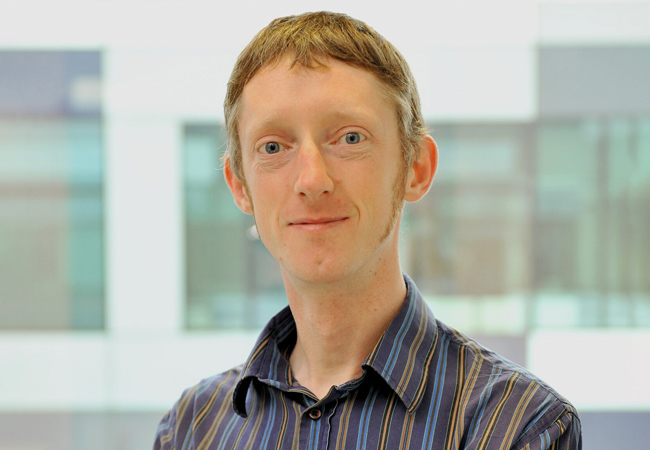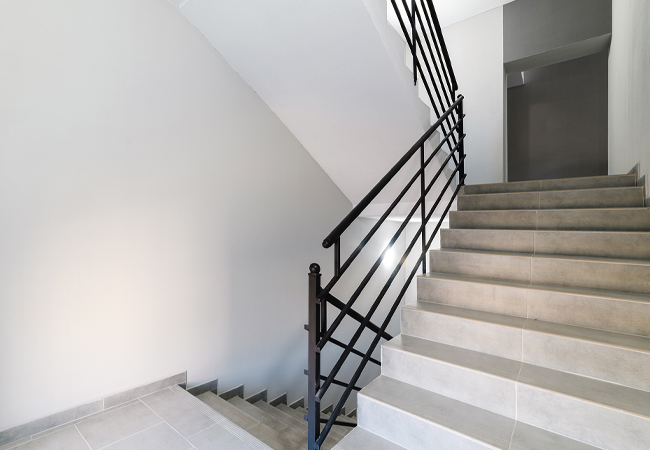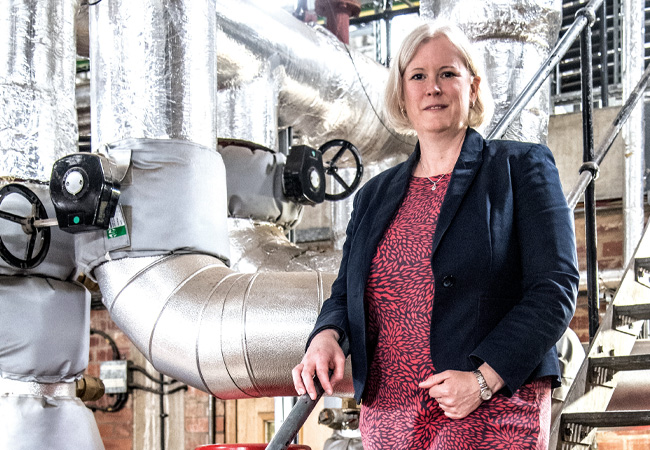
I’m on my hands and knees, crawling in pitch black through a narrow tunnel – this tour of the Palace of Westminster is not for the claustrophobic. Although it feels like we’re in a basement, we are closer to roof level, examining an original Victorian valve in an air duct 12m above the heads of members of parliament.
My tour guide, Dr Henrik Schoenefeldt, has been seconded to the Houses of Parliament to lead an ambitious research project looking at how its labyrinthine, 19th century ventilation system could be used in the historic building’s restoration. The renovation work could cost up to £5.7bn and take 32 years – or it could cost £3.5bn if MPs choose to decant to temporary offices while it is being carried out.
Schoenefeldt’s extensive knowledge of the building’s ventilation infrastructure will help designers explore the possibility of reusing historic shafts and principles to create a sustainable heating and ventilation strategy for the 21st century. BDP, which won the interdisciplinary contract for the restoration project, will be looking at these scenarios as part of a design team that includes Hoare Lea.
A monumental task
Uncovering the Palace’s network of historic ventilation infrastructure was no mean feat. The original services were never logged, and no-one has attempted to map them until now. It took Schoenefeldt four years to map more than 2,000 vertical shafts, smoke flues and ventilation channels – some up to 200m long.
In the 1840s, physician David Boswell Reid devised the building’s central air system. This admitted fresh air via shafts inside the Victoria Tower, before distributing conditioned air through an extensive network of air mains in the basement. His plan was to collect the smoke and vitiated air from the entire Palace at roof level, and discharge it centrally, via the tall tower above Central Lobby.
Reid’s original sketches show an enormous network linking the smoke or air flues of every room to the Central Tower. The channels covered long distances, with the main ones measuring 150-200m.
“Like a palimpsest, the Palace of Westminster has generations of different systems piled on top of each other” – Henrik Schoenefeldt
The thousands of vertical shafts inside the walls delivered fresh air to various chambers at every level. These connected to horizontal air channels, running parallel to the Palace’s smoke flues, which linked to the central extract system at the roof. A mezzanine floor was inserted below the roof level to collect hot air and smoke from every room in the Palace, and convey it to ventilation turrets.
‘Some fire channels are so large that you could stand up inside and walk through them over several hundred metres, uninterrupted,’ says Schoenefeldt, who has studied the Victorian system since 2011.
Even more space was needed for cooling – using water sprinklers or circulating cold water from wells through heating pipes in the air chambers – humidifying or heating the supply air. In the House of Lords, fresh air was collected and conditioned in air chambers below the principal floor, and these were linked – through vertical shafts and flues – to the basement, galleries or ceilings. ‘Some are shallow voids measuring less than a metre in height, while others extend over two storeys. In some spaces, we had to crawl, but many are tall enough to stand in,’ says Schoenefeldt.
The Victorian ductwork is composed of heavy stonework, which forms an integral part of the building’s physical fabric. Air chambers are hidden within the depth of the floors, and vertical and horizontal air flues are built in brick or carved into masonry walls. In some areas, less than 50% of the walls are structural, while vertical and horizontal ventilation shafts take up a quarter of the building’s internal volume.
Critical reconstruction
Before the historic infrastructure can be reused, designers must understand how it was operated, says Schoenefeldt, adding: ‘Intentionality cannot be deduced by looking at the physical features you see today. You need to understand the thinking behind it.’ He calls this method critical reconstruction, encompassing anatomical reconstruction, historical performance and technical evolution. (See panel ‘Critical reconstruction’).
‘Like a palimpsest, the Palace of Westminster has generations of different systems piled on top of each other. The building evolved so much over a period of 100 years that you have to unravel the layers to understand how and why it changed,’ he says.
Critical reconstruction
Through his work on the parliament project, named ‘Between heritage and sustainability – restoring the Palace of Westminster’s historic ventilation system’, Schoenefeldt has created a research method as follows:
- Design development – focusing on the use of scientific working methods in the design process
- Anatomical reconstruction – uncovering the historic design process and the thinking behind its anatomy via original drawings and onsite surveys
- Performance analysis – understanding how the system performed using benchmarks set at the time
- Continual evolution – after it was finished, the system continued to evolve over a period of 90 years, as technology and measurement methods advanced, and scientific theory changed
- Critical restoration – building on a critical understanding of the design and behaviour of the historic systems, the project will investigate how far the historic stack system could be revitalised in conjunction with the restoration programme.
The work is funded through a grant from the Arts and Humanities Research Council where Schoenefeldt is a Leadership Fellow
In the 1800s, people – not computers with sensors or actuators that opened and closed dampers – operated the system. They did this manually by taking readings with thermometers, and analysing them. Instead of algorithms, they had guidelines and made adjustments if the temperature fell by – or exceeded – a certain level. ‘Today, facilities managers are quite disengaged from their buildings, because computers are doing the data gathering,’ Schoenefeldt says. ‘Back then, the team intuitively knew how the building was behaving.’
Half a dozen people in the chambers were in charge of performing operational procedures, coordinated by a superintendent, while a Serjeant at Arms in the Commons fed qualitative data to a technical team when members complained about their environment. This process of user feedback continued until the 1940s.
Professional rivalry between architect Charles Barry and Reid meant the idea of discharging smoke and air centrally through one tower was abandoned after six years of planning, and a wall was constructed in the middle of the central chamber, separating the Commons – which remained under Reid’s control – from the Lords’ side of the building, where the responsibility for the ventilation had been transferred to Barry’s team.
“Schoenefeldt’s research has shown that the Victorian stack ventilation system – used over nine decades – was highly sophisticated”
However, the infrastructure established by Reid was not discarded. Instead of being connected to the Central Tower, it was sub-divided into multiple local systems, each with separate ventilation turrets that were added to the roof of the Palace between 1846 and 1854. Each turret had an iron smoke flue running through the centre of the air shaft, allowing the waste heat of the smoke to enhance the convection of vitiated air without mixing the two.
Just five years later, the decentralised system was reversed – the basement was changed from being the main supply to the main extract channel, while the inlet shafts were turned into stacks with coke fires at the base. This was done because they had trouble forcing enough air through the long passages, and because of problems with synchronising the supply and extract. ‘They used the same infrastructure, but operated it differently, showing the flexibility of the system,’ says Schoenefeldt.
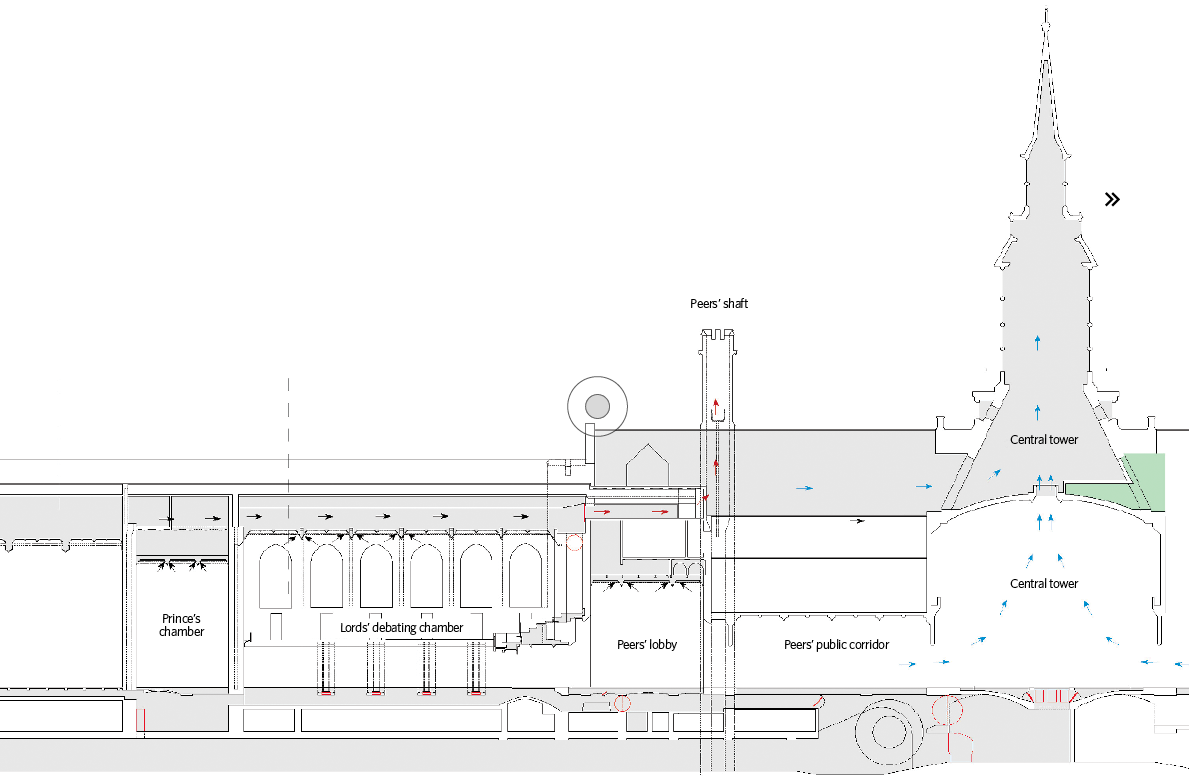
Section showing a reconstruction of Charles Barry’s original ventilation system in the House of Lords, which was in use from 1847 to 1853, before being altered (Source: Schoenefeldt, 2017)
Building on Victorian principles
Only after gaining an insight into how the Victorian system was originally used can we revisit it in light of current technology and controls, says Schoenefeldt.
Reid’s system relied on large quantities of waste heat – from gaslights, coke fires and fireplaces – to enhance airflow. ‘The technological shift is one of the biggest challenges of translating these principles; we no longer have the large quantities of heat available that would produce strong draughts,’ says Schoenefeldt. ‘When we reuse it today, we need to understand that a modern stack-ventilation system operates differently from a historic one.’
One of the options to be explored is reinstating a stack-driven system that uses the historic infrastructure. ‘I imagine a mixed-mode system, using stack ventilation principles integrated within a mechanical system, so you can switch between the two,’ he says.
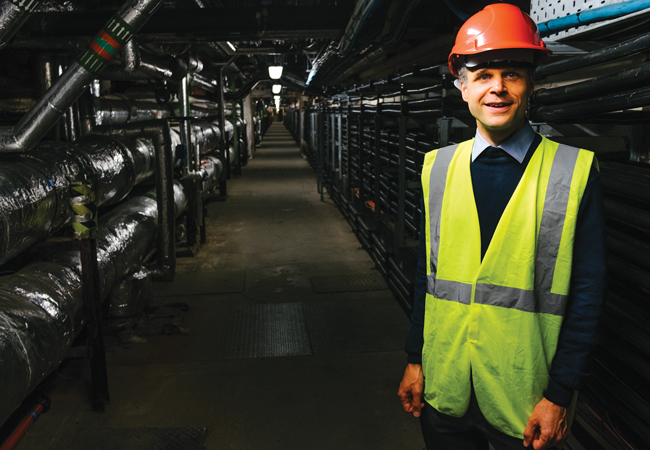
Schoenefeldt’s tour included a trip to the basement air shafts
Another scenario would be adopting the roof mezzanine as an environmental service floor, to accommodate modern environmental services in a way that they can be accessed easily for maintenance.
Schoenefeldt believes that, because of the large cross-sections of the shafts – designed by the Victorians to keep air moving with least resistance – the energy needed to move air mechanically can, potentially, be reduced.
Surveyor Plowman Craven has been employed to undertake the first comprehensive survey of the Palace’s existing fabric, using 3D laser-scanning technology known as point-cloud scanning. This will yield data for the production of a virtual model, which the designers in charge of implementing the restoration programme will use.
Bridging research and practice
Schoenefeldt hopes to bridge the gap between scholarship of historic environments and building practice through a series of initiatives. As well as running workshops for architects and building services consultants, he is working on conservation management plans to help owners, managers and assessing authorities make sound decisions about conserving and managing heritage buildings.
‘Typically, kit is put into buildings rather than working with the inherited infrastructure, which is an enormous resource. If you understand how they were operated, you can build on them,’ he says.
Schoenefeldt is also keen to embed his research methodology into education. He has developed a new module – Understanding historic buildings and past environmental technologies and strategies – for the MSc programme in architecture and sustainable environment at the University of Kent, where he is a senior lecturer at the Kent School of Architecture.
‘It will help future services engineers or conservation architects to learn how to study – or at least understand – some of the principles when they come across such buildings,’ says Schoenefeldt, who was recently made National Teaching Fellow, in recognition of his contribution to developing new ways of embedding research and sustainable practice into the teaching of architectural design.
Schoenefeldt is also hoping to establish a research student engagement initiative as part of the CIBSE Heritage Group. The programme aims to establish a more active forum for the study of historic environmental principles, through a series of workshops in 2017-18 to bring together students, group members, academics and the wider CIBSE community.
‘I feel very strongly about it,’ says Schoenefeldt. ‘It’s a great opportunity for research to have a direct impact on practice.’
Model democracy
The model will feed into a BIM simulation of the Palace’s ventilation network, says Schoenefeldt, whose research provided the foundational knowledge for the 3D point-cloud survey. This involved reconstruction of the original system design – including many of the lost features – based on archival research, plus site explorations and photographic surveys of the surviving features inside the Palace. These plans were then used to guide Plowman Craven in its systematic scanning. Before this, only a small amount of historic ventilation network had been covered by the 3D point-cloud survey.
Schoenefeldt is now working with BDP to develop a methodology for an extended survey of the complex network of voids not included in the scans undertaken by Plowman Craven. The pilot will be used to test and refine the methodology. ‘The Palace offers a huge resource of spaces,’ he says. ‘Once designers understand what the infrastructure can offer, they can reinterpret the historic system.’
Schoenefeldt’s research has shown that the Victorian stack ventilation system – used over nine decades – was highly sophisticated, having undergone continuous refinement involving several generations of scientists and engineers. Today, engineers face a new challenge: reimagining the dark, extensive voids for use with modern controls and technologies, to ensure the home of parliament can begin a new chapter.
Build2Preform
On Tuesday 21 November, from 2-4.30pm, CIBSE’s free-to-attend Build2Perform event will feature a conference segment entitled ‘Making heritage buildings perform’.
Dr Henrik Schoenefeldt will share current research into the 19th century building services at the Palace of Westminster. He will discuss his research of the original stack ventilation system, explore how far it could be re-used, and share new insights into the historic methods of building performance evaluations.
In the 2.45-3.30pm slot, CIBSE Heritage Group chair Dr Neil Sturrock will lead a session on what we can learn from the building services in historic buildings. This will include an in-depth study of a public building from the 1850s, which reveals marked similarities with an exemplar from the 21st century.
In the 3.45-4.30pm slot, Andrew More, senior building services engineer at Historic England, will discuss how to deal with historic buildings, including fundamental concepts and rules of thumb.
To register and for details, visit www.cibse.org/b2plive



